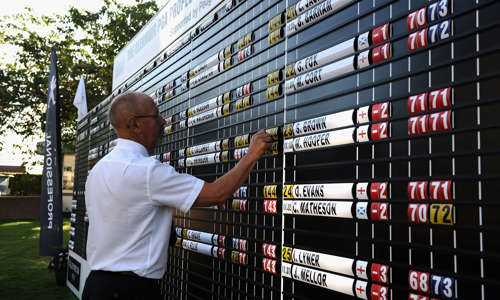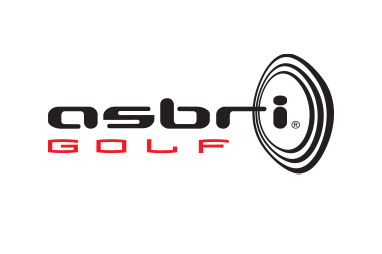Peter Arnott and Stuart Morgan are The Practice Thinkers – and their aim is to help you help the golfers you teach to learn in a way that transfers to better performances when it really counts.
The transfer of skills – applying learned abilities cornerstone of effective coaching and athlete development. In 2020, Rahman suggested that transfer of skill hasn’t changed in 30 years; successful transfer falls between 15-30%. This to us was quite scary when we read it. More encouragingly, a study conducted by Koerner & Staller (2024) increased transfer by up to 45% using a specific type of training.
Integrating frameworks like Farrow and Robertson’s ‘Skill Acquisition Periodisation’ (SAP) and Otte et al’s ‘Periodization of Skill Training’ (PoST) can enhance this process.
Skill Acquisition Periodisation (SAP) Framework (2016)
The SAP framework adapts traditional periodisation principles to skill development, emphasizing specificity, progression, overload, reversibility and tedium. This structured approach allows coaches to systematically plan, monitor and evaluate skill acquisition programmes, ensuring that training interventions are both acute and longitudinally effective.
Periodisation of Skill Training (PoST) Framework (2019)
Recognising the unique needs of specialist coaches, Otte et al introduced the PoST framework. This model integrates monitoring principles from the SAP framework, offering a tailored approach for skill development in scenarios where coaches work with athletes for shorter durations. PoST provides a structured methodology to enhance skill acquisition within limited time frames.
We have taken both of these models along with the transfer research and adapted them for golf. Here, we will introduce you to the Develop, Train, Perform (DTP) framework and describe four key areas that increase the probability of transfer of practice to the course with golfers. Stuart has applied this framework to help two golfers get to the last two Ryder Cups.
TRAIN (In Red)
‘Train’ is about practising beyond what the sport requires. It’s about stretching the standards you desire to play at and it’s about challenging a new movement solution under task pressure.
When we discuss this training space, we often see many golfers and coaches use ‘within skill’ variability and rarely ‘between skill’ variability.
‘Within skill’ is the same skill, practiced with variability. For example, an approach-play practice task hitting to different yardages.
‘Between skill’ is practising multiple skills at the same time. In our experience, this is not used enough by coaches and golfers.
However, golf is a ‘between skill’ sport: Driving, approach play and putting are three different skills. This, in our opinion, is the lowest hanging fruit to improvement, especially as a high-performing player. If we challenge and stretch golfers in practice to a higher ability level than they currently achieve, we promote stability at a higher level.
In golfer speak, that means more consistent scores, more frequently at a higher level of competitive play.
Think of an Olympic weightlifter – they go into competition having trained at a level that is close to or above what they will be trying to lift in an event.
At an elite level in golf practice, we often see the opposite, golfers training way below the intensity and challenge of where they are trying to compete!
Then they wonder why the fruits of their labour in practice turn sour when they compete.
Key points
- Golfers will fail a lot so explain the objective of the session beforehand
- We are mixing between task difficulty (TD) and pressure training (PT)
- Use outcome targets to shape practice difficulty, such as stats
- Mix ‘between skill’ and ‘within skill’ variability
PERFORM (In Blue)
Perform is about looking good and feeling good. This practice is about success and feeling good about your golf game, it’s not about learning anything new.
In Stuart’s doctorate assessing DP World Tour and PGA Tour golfers, the more experienced golfers use this phase when at tournaments.
In the practice world, we see that an understanding of ’Perform’ or performance practice (as it is more commonly known) is that it is about extreme challenge, but that for us is Train (Red practice).
Nothing new is happening in a ‘Perform’ practice environment, it’s low in complexity and high in getting ready to execute.
Key points
- Practice that ‘looks good’ and ‘feels good’
- Simple tasks – low in complexity
- It’s not time to learn new things, but a time to execute what you have
- Go through routines
- So called ‘blocked’ or ‘constant’ practice is fine in this space, this is potentially what you see golfers doing at tour events.
Our four key areas
Let’s move on to the four areas that we want present in these phases of practice to increase the probability of practice transfer
Within Develop (Green), Train (Red), Perform (Blue) practice we encourage four key areas to be present as much as possible to enhance transfer. These areas are: Information; Action; Situation; and Emotion. Let us explain these areas in more detail.
INFORMATION
When playing golf, we have lots of information present. We have bunkers, wind, OB, hazards and so on. When we are practising, we also want information like this to be present. Sometimes we might have to use our imagination, but that’s ok.
Over the past few decades coaches and golfers have started falling into the reductionist method of coaching and taking information out, because it’s sometimes easier for the golfer and the coach to design.
The perception of performance generally increases in ‘simpler’, information-impoverished practice environments, such as the driving range or an indoor area, but often does not transfer to the golf performance environment.
Our minimum information
requirement in a practice session is the target. As Scottie Scheffler’s coach Randy Smith says: “We want a target present.”
ACTION
Back in the 1980s, when the video camera, and then a little later video software, came into our world, coaches started breaking whole movements down into postures (positions).
It helped coaches analyse movement in many ways, but potentially not in learning. A golf swing or a pitch shot can be described as a ‘discrete action’. This means an action that has a clear start and finish point and is fast (over in a quick space of time). This was highlighted beautifully by Richard Schmid in 1986 that a discrete skill broken from its whole has less than a 7% chance of transferring, therefore null.
When we are making a swing change in the Develop (Green phase), let’s work to keep the movement as a whole. If we break the swing into parts, it has different dynamical properties than when we are making a full swing.
For example, when breaking a swing into parts, it produces different forces on the golf club, relative to a full swing. Therefore, in golfer speak, how the golf club feels and moves will be very different at different speeds.
This can be managed by making a few swings at different speeds, to gain a feel. But let’s not overstay our welcome, let’s work harder to figure out certain constraints so that the golfer can self-organise within a full swing that produces similar forces on it. Once again, we suggest this for the purpose of increasing the likelihood of practice transfer.
SITUATION
We’ve all done it: “This putt to win The Open.”
Remember the Rahman study about practice transfer that we mentioned at the start? If we start to add different situations into our practice – “I’ve got a one-shot lead, I’ve got a 9-iron into a left pin, what’s my play and can I execute?” – this elicits these things called identical elements.
INFORMATION, ACTION, SITUATION and EMOTION are coming next. Introducing these four areas into the practice environment increases our transfer probability because practice is more like specific performance environments that we have or will face.
A specific example we created was a situation for a golfer who lost a tournament in real life, after being in the lead with five holes to play, because of slow play. Therefore, we created a situation in group practice where the golfer teed off last and we had a ‘patsy’ in their group playing slowly. Let’s just say there was a little emotion involved in this group session!
EMOTION
The previous example leads us nicely into one of the most overlooked areas of practice, the role of emotion in practice. Or in science, affective learning.
Think about the gamut of emotions you experience while playing competitive golf and how that subsequently changes behaviours such as decision making, clarity on shot choice, tension in the body and adrenaline.
We hear the old adage over and over again ‘but it’s never going to be like tournament play’ when designing practice environments that elicit emotions.
While we agree it will never be as intense as competitive play, if we can get even some of the emotions in training that are experienced in competition then, potentially, we can learn how to be aware of how our emotions can change our behaviours on the golf course and build in strategies to complement them.
An example, which we’ve seen a few times, is where golfers take their Trackman approach-play iron carry numbers in an emotionless environment on a driving range. Then when tested in an intense training session, full of emotion, on the range or the golf course, the carry numbers don’t correlate.
Steve Williams has talked numerous times about how, in the heat of the battle, Tiger Woods’ distances increased as adrenaline was pumping through the player.
This area lends itself to Train (Red) practice and can be elicited in practice via task difficulty or/and consequences. However, emotion is prevalent in all three practice phases.
When developing new skills in Develop (Green) phase it is important to remember that a playful, more open emotional state lends itself better to learning new skills.
About Practice Thinkers
We’ve taken these proven models and integrated them into our innovative Practice Thinkers app, designed to guide golfers through the DTP framework with tailored practice games and progress tracking. Whether you’re an aspiring amateur or an elite professional, our app helps you structure your practice more effectively, ensuring that every session contributes to improved on-course performance.
Start your journey to better practice today by downloading the app and take the first step towards transforming your practice into tangible results on the course.





































